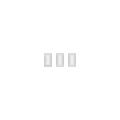The subject of RJ45 splitters has come up a few times in ACL chat. I hope to clear up the confusion surrounding these devices.
Internally, the pair splitter takes each of the two incoming CAT5 cables and routes two cable pairs of each one to the output side. The reverse is done at the remote (PC, etc) end. The pair splitter is the same at either end, just used "backwards" at one end.
One shortcoming with RJ45 pair splitters is that the Ethernet signal is limited to 10/100mb, as 1000mb (1gb) uses all four pairs. Since a pair splitter only uses two pairs of each Ethernet connection, 10/100mb is as good as you can do.
Internally, all pin 1's are connected and the same for pins 2 to 8 as shown below:
These are '''not suitable''' for Ethernet connections, but they can be used as a passive DMX splitter if care is used.
Pair Splitter
These are designed to enable a single CAT5 cable to carry two Ethernet connections. One pair splitter is used at either end. These are handy when you only have one CAT5 cable going between two locations, but need to run two Ethernet devices. They can have one male and two female connectors (first picture) or three female connectors (second picture).Internally, the pair splitter takes each of the two incoming CAT5 cables and routes two cable pairs of each one to the output side. The reverse is done at the remote (PC, etc) end. The pair splitter is the same at either end, just used "backwards" at one end.
One shortcoming with RJ45 pair splitters is that the Ethernet signal is limited to 10/100mb, as 1000mb (1gb) uses all four pairs. Since a pair splitter only uses two pairs of each Ethernet connection, 10/100mb is as good as you can do.
Doubler
RJ45 double adapters usually look like this:Internally, all pin 1's are connected and the same for pins 2 to 8 as shown below:
These are '''not suitable''' for Ethernet connections, but they can be used as a passive DMX splitter if care is used.
Example 1
The first example is a split to two DMX controllers at the end of a cable run. The length of the CAT5 cable between the DMX source (dongle, DR4, etc) to the RJ45 doubler can be quite long. The CAT5 cables from the doubler to each DMX controller however need to be as short as possible, ideally less than 500mm each.Example 2
Our second example is where you're using RJ45 doublers to "T" the DMX signal near each DMX controller. As per the previous example, the CAT5 cable between the RJ45 doubler and the DMX controller needs to kept nice and short (500mm max). The CAT5 cable going between the RJ45 doublers however can be much longer. This can be a good way to continue the DMX signal on the the next part of your display when the DMX controller doesn't have looping RJ45 connectors.
Categories:
Wiring pages
